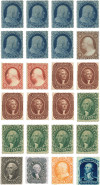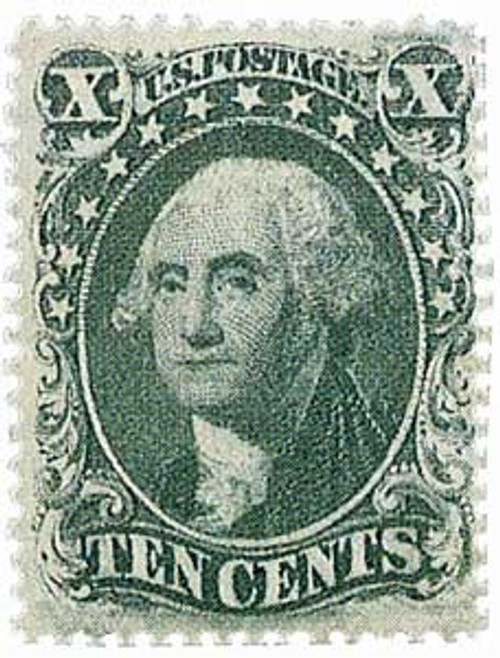
# 18-39 - Complete Set, 1857-61 Issue
America’s First Perforated Stamps
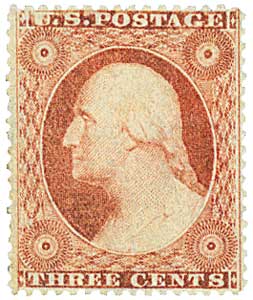
The earliest known use of a US perforated postage stamp was on February 28, 1857. Perforations were introduced to make separating stamps quicker and easier.
When the world’s first postage stamps were released, no provision was made for separating the stamps from one another. Post office clerks and stamp users merely cut these “imperforates” apart with scissors or tore them along the edge of a metal ruler. Stamps were often damaged due to ripping or cutting into a neighboring stamp by mistake. A method was needed to separate the stamps more easily and neatly.
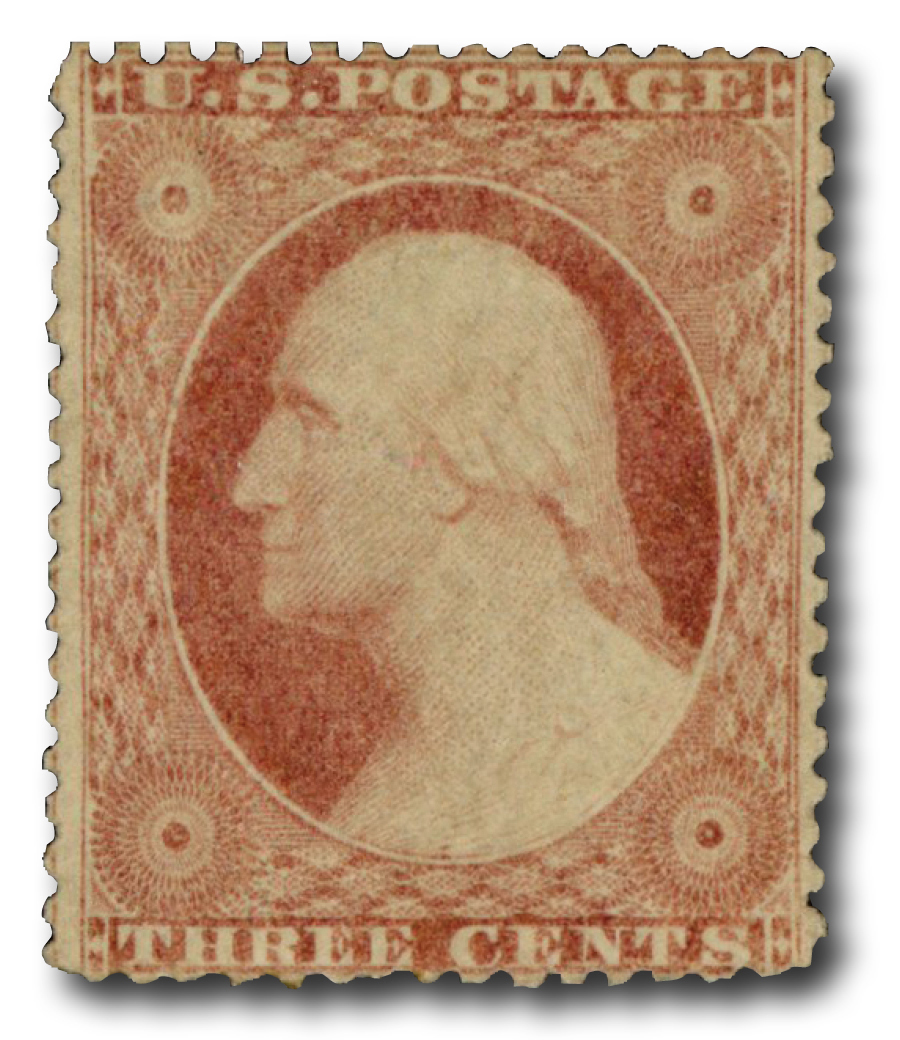
In 1847, Irishman Henry Archer patented a machine that punched holes horizontally and vertically between rows of stamps. Now stamps could be separated without cutting. Perforations also enabled stamps to adhere better to envelopes. He sold his invention to the British Treasury in 1853. That same year, Great Britain produced its first perforated stamps.
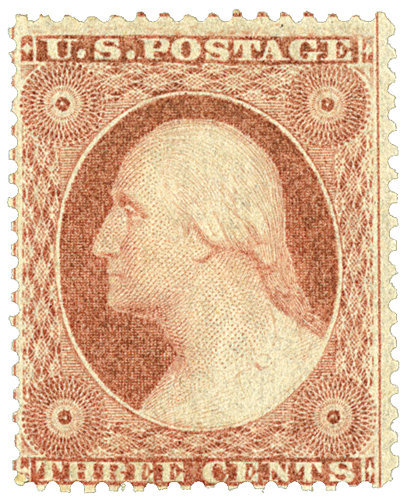
Meanwhile, in the US, the Act of March 3, 1855, made the prepayment of postage mandatory as of that April, and the use of stamps for prepayment mandatory on January 1, 1856. Postmaster General James A. Campbell predicted that this change would greatly increase the demand for stamps. And it did – stamp use doubled over the course of the next two years.
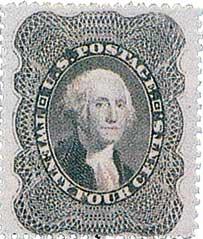
During this time, Postmaster General Campbell received a letter from his friend Horace Binney Jr. Binney had seen the perforated British stamps, and suggested the US perforate their stamps. Campbell agreed and immediately began investigating the possibility.
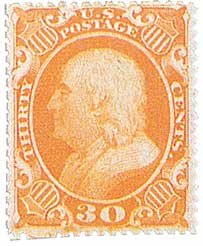
The printing firm of Toppan, Carpenter & Co. reached out to Perkins, Bacon & Co, which had produced Britain’s perforated stamps. Perkins and Bacon were both Americans and Perkins was Charles Toppan’s uncle. They corresponded back and forth, and Perkins and Bacon encouraged them to purchase a rouletting machine patented by the Bemrose brothers of England. Rouletting was unsuccessful, so George Howard converted it into a perforating machine in 1856. The following year, they used the machine to produce America’s first perforated postage stamps, the Series of 1857-61.
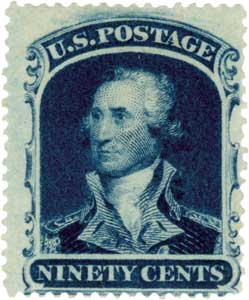
The 1857-61 issues have perforations measuring 15½. Toppan, Carpenter & Co. used the plates from the 1851-57 issues to produce these stamps. Because the same plates were used, the perforate stamp types are the same as the corresponding imperforate stamps. US #25 was the first of these stamps to be issued, with its earliest known usage on February 28, 1857. This stamp was printed using plates 4, 6, 7, and 8.
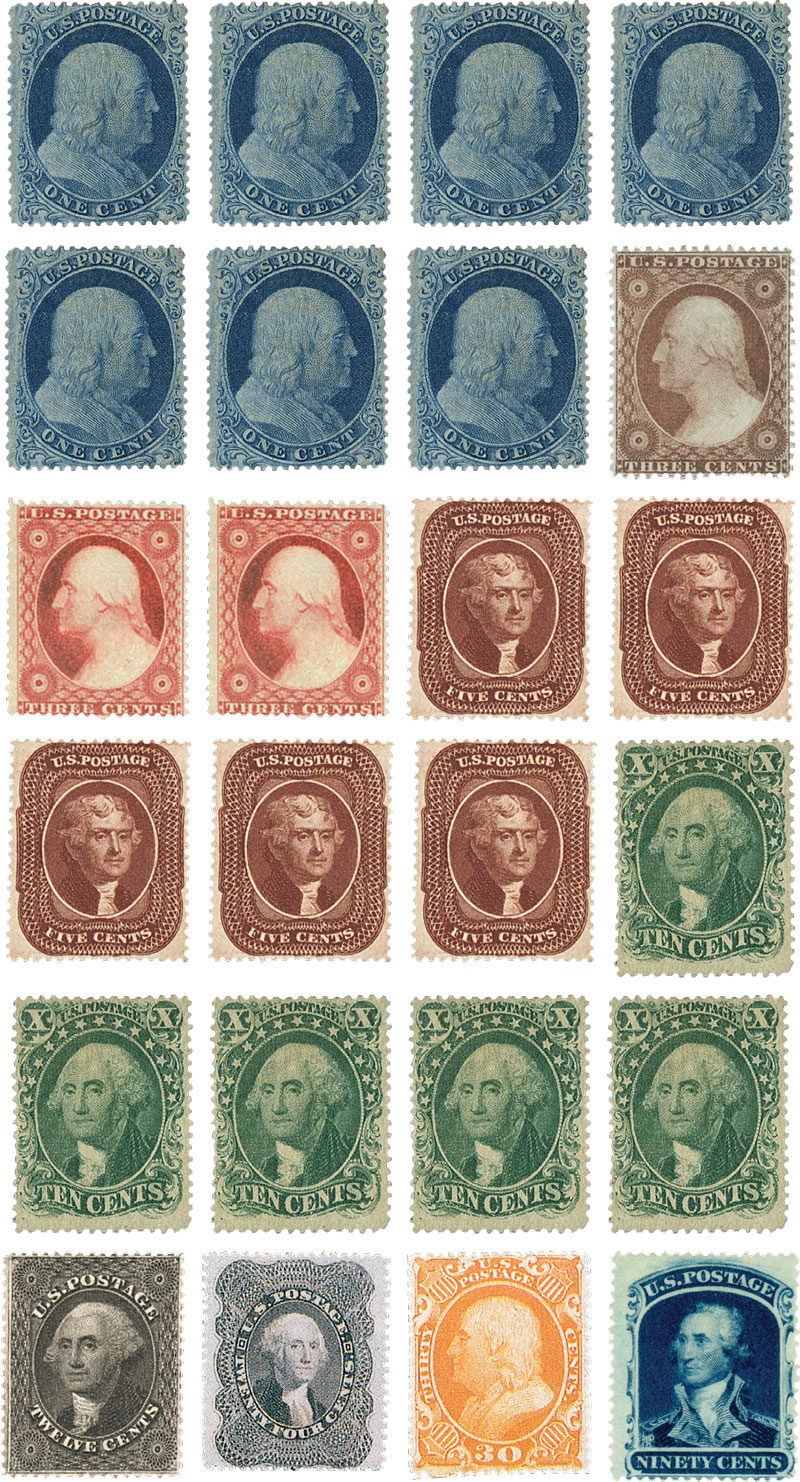
US #25 is a Type I stamp – it has an outer frame line on all four sides. Because the plates were intended for imperforate stamps, the entire series of perforated stamps (US #18-39) is noted for having narrow margins. These resulted in the perforations cutting into the top and bottom frame lines. Plates were adjusted for each of the stamps, resulting in several different “types” for several of the stamps.
America’s First Perforated Stamps

The earliest known use of a US perforated postage stamp was on February 28, 1857. Perforations were introduced to make separating stamps quicker and easier.
When the world’s first postage stamps were released, no provision was made for separating the stamps from one another. Post office clerks and stamp users merely cut these “imperforates” apart with scissors or tore them along the edge of a metal ruler. Stamps were often damaged due to ripping or cutting into a neighboring stamp by mistake. A method was needed to separate the stamps more easily and neatly.

In 1847, Irishman Henry Archer patented a machine that punched holes horizontally and vertically between rows of stamps. Now stamps could be separated without cutting. Perforations also enabled stamps to adhere better to envelopes. He sold his invention to the British Treasury in 1853. That same year, Great Britain produced its first perforated stamps.

Meanwhile, in the US, the Act of March 3, 1855, made the prepayment of postage mandatory as of that April, and the use of stamps for prepayment mandatory on January 1, 1856. Postmaster General James A. Campbell predicted that this change would greatly increase the demand for stamps. And it did – stamp use doubled over the course of the next two years.

During this time, Postmaster General Campbell received a letter from his friend Horace Binney Jr. Binney had seen the perforated British stamps, and suggested the US perforate their stamps. Campbell agreed and immediately began investigating the possibility.

The printing firm of Toppan, Carpenter & Co. reached out to Perkins, Bacon & Co, which had produced Britain’s perforated stamps. Perkins and Bacon were both Americans and Perkins was Charles Toppan’s uncle. They corresponded back and forth, and Perkins and Bacon encouraged them to purchase a rouletting machine patented by the Bemrose brothers of England. Rouletting was unsuccessful, so George Howard converted it into a perforating machine in 1856. The following year, they used the machine to produce America’s first perforated postage stamps, the Series of 1857-61.

The 1857-61 issues have perforations measuring 15½. Toppan, Carpenter & Co. used the plates from the 1851-57 issues to produce these stamps. Because the same plates were used, the perforate stamp types are the same as the corresponding imperforate stamps. US #25 was the first of these stamps to be issued, with its earliest known usage on February 28, 1857. This stamp was printed using plates 4, 6, 7, and 8.

US #25 is a Type I stamp – it has an outer frame line on all four sides. Because the plates were intended for imperforate stamps, the entire series of perforated stamps (US #18-39) is noted for having narrow margins. These resulted in the perforations cutting into the top and bottom frame lines. Plates were adjusted for each of the stamps, resulting in several different “types” for several of the stamps.



